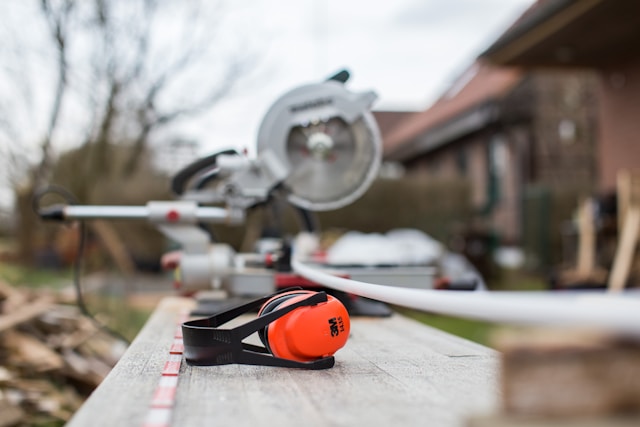When tackling tough outdoor projects, having the right tool in your hands can save time and energy while boosting accuracy. That’s where cordless circular saws truly shine. They combine freedom of movement with the cutting power needed for heavy-duty tasks like deck building, fence framing, and exterior renovations. Without the hassle of cords or limited reach, you can work efficiently in any outdoor space. Thanks to advances in battery technology and motor design, today’s cordless options rival the performance of traditional corded saws, making them essential for professionals and DIYers alike.
Contents
- 1 Why Cordless Circular Saws are Ideal for Outdoor Projects
- 2 Key Features to Look For in a Cordless Circular Saw
- 3 Power and Performance Considerations
- 4 Battery Life and Charging Efficiency
- 5 Durability in Harsh Conditions
- 6 Comfort and Ease of Use
- 7 Safety Features Worth Having
- 8 Best Situations to Use Cordless Saws Outdoors
- 9 Maintenance and Care for Long-Term Use
- 10 Popular Brands and Trusted Models
- 11 Comparing Cordless to Corded Saws
- 12 Balancing Power, Durability, and Ease of Use
Why Cordless Circular Saws are Ideal for Outdoor Projects
Cordless circular saws have come a long way in terms of power and battery technology. Older models often lacked the strength and stamina to compete with corded versions, but today’s tools deliver impressive torque and extended run times. For outdoor projects, the cordless design removes the hassle of running extension cords across the yard or job site. This makes them safer, more portable, and more convenient for cutting large pieces of lumber, plywood, or even tough composite materials.
Key Features to Look For in a Cordless Circular Saw
Finding the right cordless circular saw requires paying attention to the details that impact performance. Blade size determines the cutting depth, while motor power affects how easily the saw handles dense materials. Battery capacity is another crucial factor, since outdoor projects often involve longer working hours. Ergonomic design, adjustable bevel capacity, and a sturdy base plate all contribute to a smoother cutting experience. Dust blowers and LED lights are small but useful extras that can make working in outdoor conditions more comfortable and accurate.
Power and Performance Considerations
A cordless saw should be able to handle more than just light cuts. When working on outdoor projects like framing or cutting hardwood, you need a motor that delivers high RPMs and steady torque. Brushless motors are increasingly common in premium models, offering more power and longer life compared to traditional brushed designs. When paired with high-capacity lithium-ion batteries, these motors can rival the performance of corded saws. The ability to maintain consistent power throughout the cut is essential when working outdoors, where accuracy is harder to achieve without stable cutting surfaces.

Battery Life and Charging Efficiency
One of the most important aspects of using a cordless tool outdoors is battery performance. Modern saws typically use 18V or 20V systems, and larger batteries can extend run time significantly. Some brands even offer flexible battery platforms that work across multiple tools, allowing you to swap batteries between drills, saws, and other equipment. Fast-charging technology is another factor to consider, since it minimizes downtime during long projects. Having a spare battery on hand ensures that you can keep working without unnecessary interruptions.
Durability in Harsh Conditions
Outdoor projects often expose tools to dust, debris, and unpredictable weather. A durable circular saw with a reinforced base plate and rugged housing will stand up to these challenges. Many models now include protective features such as sealed switches to keep out dust and water. Magnesium or aluminum shoe plates provide strength without adding excessive weight, making it easier to handle the saw during long sessions. Durability is especially important if you plan to use the saw frequently on uneven surfaces or heavy-duty construction materials.
Comfort and Ease of Use
While raw power is important, the usability of a saw should not be overlooked. Ergonomic handles, balanced weight distribution, and intuitive controls all contribute to reduced fatigue during long projects. Cordless saws are often lighter than their corded counterparts, making them easier to maneuver for overhead or angled cuts. Clear sightlines, laser guides, and adjustable cutting depth settings help increase accuracy, which is particularly valuable when working outdoors, where precision is harder to maintain.
Safety Features Worth Having
Safety should always come first when working with powerful tools. Cordless saws often come equipped with electronic brakes that quickly stop the blade once the trigger is released. This feature not only prevents accidents but also saves time between cuts. Blade guards, textured grips, and anti-kickback features add an extra layer of protection. Considering that outdoor environments can be unpredictable, these safety features provide peace of mind and help reduce the risk of mishaps.
Best Situations to Use Cordless Saws Outdoors
Cordless saws excel in situations where mobility and flexibility matter most. Building a backyard deck, cutting rafters for a shed, or working on a remote property all require tools that can operate without the limitations of power cords. These saws also perform well when you need to move quickly between cutting areas, such as when framing fences or trimming exterior siding. Even for DIY projects like building garden furniture, a cordless saw allows you to work freely without being tied to a single location.
Maintenance and Care for Long-Term Use
Like any tool, a cordless circular saw requires regular maintenance to stay in top condition. Keeping the blade sharp ensures cleaner cuts and reduces strain on the motor. Dust and debris should be cleared away after each use to prevent buildup around the motor and moving parts. Checking the battery regularly helps maintain performance, and storing the tool in a dry location protects it from moisture damage. When preparing for larger projects or moving between job sites, consider packing your power tools properly to avoid damage in transit. This small step goes a long way in preserving their lifespan.
Popular Brands and Trusted Models
Several manufacturers have established themselves as leaders in the cordless circular saw market. Brands like DeWalt, Makita, Milwaukee, and Bosch are widely respected for their durability and innovation. Their flagship models often include brushless motors, advanced battery systems, and user-friendly designs. While premium saws come with a higher price tag, they provide unmatched reliability for outdoor work. For those on a tighter budget, mid-range options still deliver strong performance without sacrificing too much in terms of features.

Comparing Cordless to Corded Saws
While corded saws traditionally offered greater power, the gap has narrowed considerably with advancements in battery and motor technology. For most outdoor projects, a cordless circular saw provides all the power needed while offering freedom from extension cords. However, if you frequently work on extremely dense materials or extended indoor projects where an outlet is always available, a corded saw may still have advantages. Ultimately, the choice depends on how often you work outdoors and the level of convenience you prioritize.
Balancing Power, Durability, and Ease of Use
Outdoor projects demand tools that are powerful, durable, and convenient. Cordless circular saws deliver all three, offering the mobility needed to cut lumber, siding, and even tough composites without being tethered to an outlet. With modern features like long-lasting batteries, brushless motors, and enhanced safety systems, these saws have become indispensable for outdoor builders and hobbyists. Choosing the right model ensures your projects are not only completed efficiently but also with the freedom and precision that only cordless tools can provide. Investing in one is more than a purchase—it’s a commitment to easier, more effective outdoor work.

